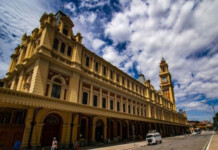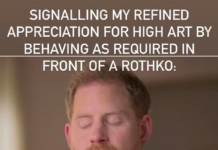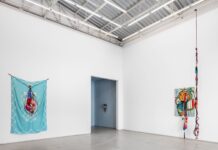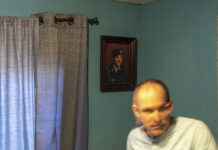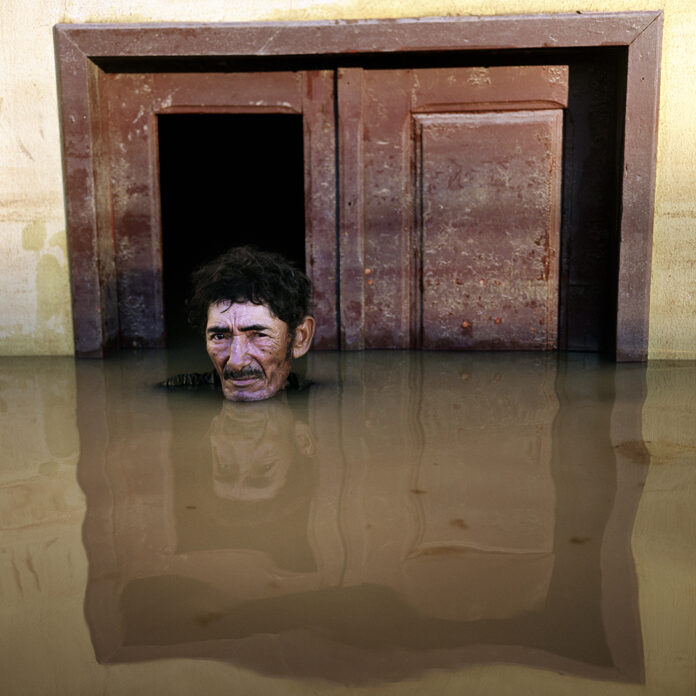
“There was a point for me where I was researching the imagery of climate change and I felt that it was very white on many levels, and very distant – images of polar bears and glaciers and often very beautiful scenarios”, once reported Gideon Mendel to journalist Adele Peters. The South African photographer – with a body of work related to climate disasters that goes beyond a decade – seeks to offer another facet for the representation in images of one of the most perplexing global crises.
Mendel confesses to Peters: “A lot of the dialogue around climate change and the organizational response is very linked to that sort of white, middle-class environmental, previously hippie eco movement”, which would be limiting its effectiveness, given that climate change affects many people of color around the world. “I really feel it [the world] needs an injection of a much more radical kind of activism”, he completes. Gideon’s observation is not unreasonable, as researcher Emmanuel Skoufias notes: “while the eyes of the world have been riveted on polar bears, Antarctic penguins, and other endangered inhabitants of the Earth’s shrinking ice caps, relatively few researchers have turned serious attention – until recent years – to quantify the prospective long-term effects of climate change on human welfare”.
“I bring people into the depiction of climate change”, says Gideon, who is based in London. With his Submerged Portraits project, he began documenting floods in 2007, when a series of summer rains caused much of central and northern Britain to be submerged. Within a matter of weeks of the first episode, millions of people from Bangladesh to India and Nepal had to escape floods far greater than they had ever seen. The contrast between the impacts of the two events (while sharing a certain vulnerability that seems to provide a stimulus for unity) motivated the photographer to put in practice the idea of a series portraying flood victims. Since then, he has visited Australia, Bangladesh, Haiti, Kashmir, Pakistan and the United States, to name some of the 13 countries that, within the project, represent 19 floods.
Even before developing Submerged Portraits (encompassed by a larger project called Drowning World), Mendel was no longer a beginner. He had captured imagetically themes such as Apartheid and the HIV/AIDS crisis in South Africa, for which he won the World Press Photo. He sees Submerged Portraits as a departure from classic photojournalism: “I am not a documentarist, I am kind of an intervener of sorts”, he claims. To which he adds, “I am not just photographing what is in front of me, I am constructing scenarios with the people. I am choosing the background, I am choosing where to place people. I am not coming to those people at home and taking their pictures as they are. In a certain way, what I’ve been trying to do is produce a consistent image from place to place, with a familiarity in it, a repetition of the gaze. I am not just making evidence, I am seeking to make pictures that speak through being aesthetically powerful and even a disconcerting beauty amidst the horror.”
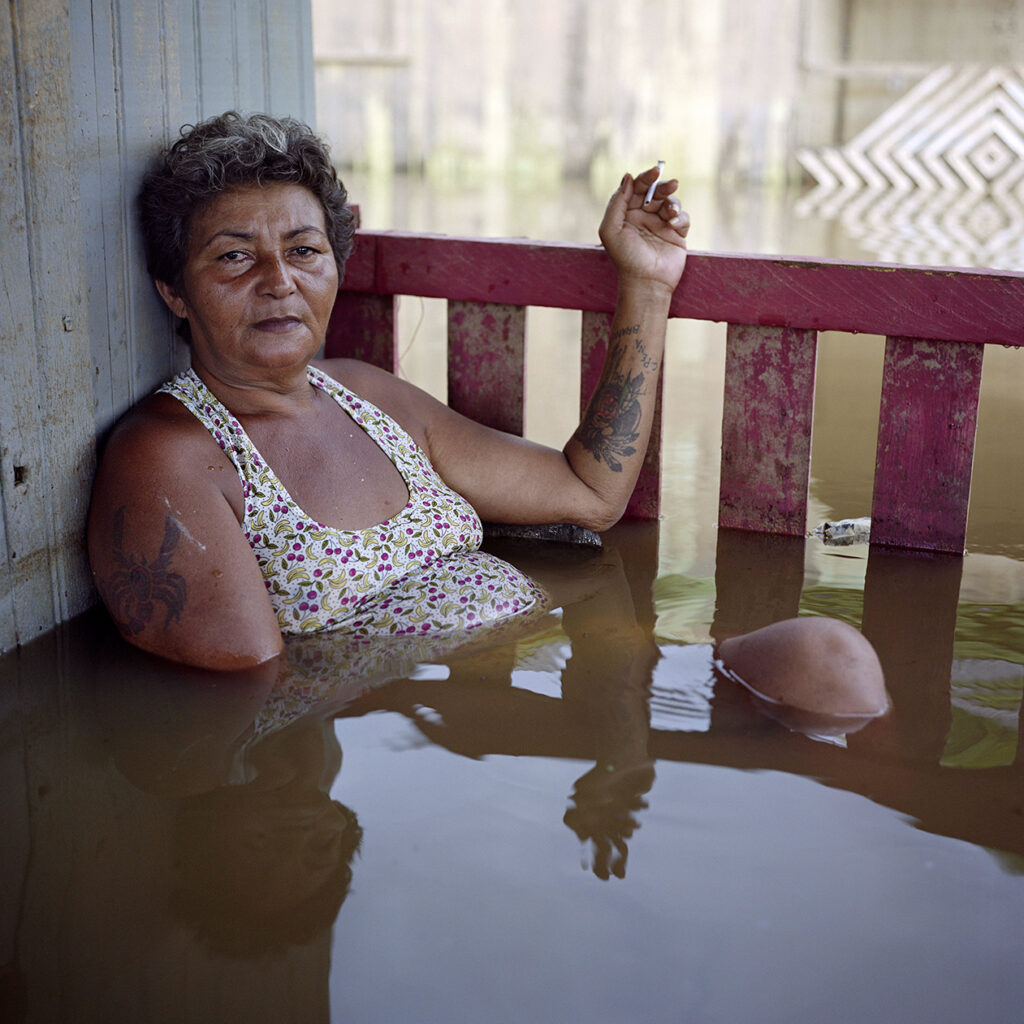
There is, indeed, something disconcerting about the images. On the one hand, they are conventional portraits of people standing in front of the camera and looking at it. However, the context, the landscape and the environment are extraordinary. Therefore, they are disconcerting together. This classic portrait format helps to give honesty to Submerged Portraits, an admission of scene manipulation.
There’s a sense of being witnessed. I can’t help people, I haven’t got the resources to bring change. But I offer a kind of witnessing. And some people seem to value and appreciate.
When he came to Rio Branco, in 2013, the level of the Acre River had reached 17.88 meters, having exceeded its historical quota registered in 1997, when it reached 17.66 meters. According to the G1 news portal, five public shelters were set up at the time, in the capital of Acre, to keep the flood victims safe: approximately 6,000 people were made homeless and another 70,000 were affected. It was also detailed by G1 that forty of the city’s 212 neighborhoods were impacted by the flooding of the Acre River, whose level is usually around six to eight meters – in periods of drought it can be below three. Mendel reports that when he got there, the water level had already turned down, having previously passed over the roofs of some houses. “The people [I portrayed] belonged to a poor community and they may have no access to running water, so they would use the flood waters to clean their walls”.
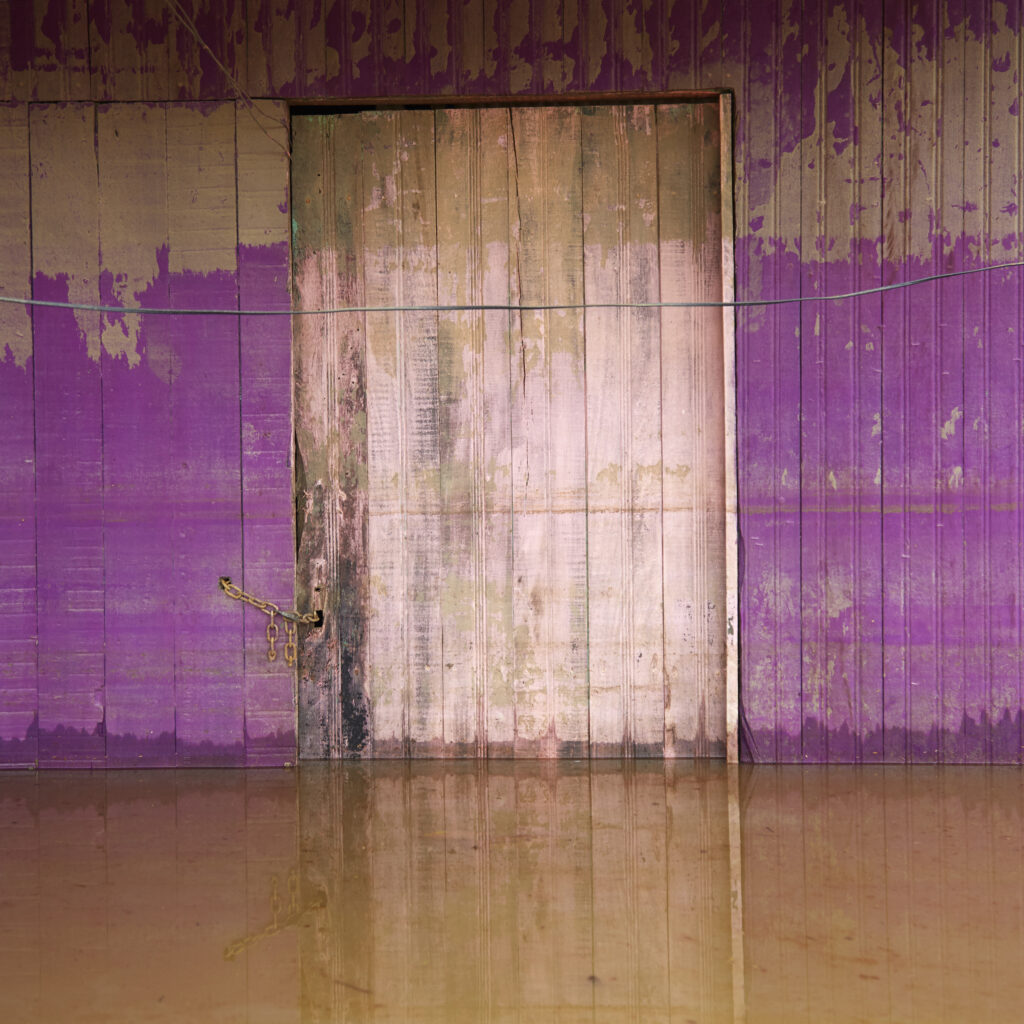
Analyzing the scenario of environmental response since then, the photographer makes the reservation: “It was not as the government before Bolsonaro was brilliant in terms of its response to the environment, I think it was acting in very contradictory sort of ways. What is terrifying, in a global sense, is that, in a moment in history when you need concerted global action – particularly in Climate Change -, there are so many populists leaders around the world who are doing their best to undermine environmental efforts – and I think with huge support from the petrochemical industrial complex”.
In 2011, in the article Four phrases that make Pinocchio’s nose grow, the Uruguayan journalist and writer Eduardo Galeano also notes the support of industry sectors in this reversal of environmental efforts – although, at that time, not referring to the phenomenon of populism. Galeano reminds us that of the ten largest seed producing companies in the world, six manufacture pesticides (Sandoz-Ciba-Geigy, Dekalb, Pfizer, Upjohn, Shell, ICI). “The chemical industry has no masochistic tendencies”, writes the Uruguayan. He says: “The recovery of the planet or of what is left of it implies the denouncing of the impunity of money, and human freedom. Neutral ecology, which rather resembles gardening, becomes an accomplice to the injustice of a world where healthy food, clean water, clean air and silence are not everyone’s rights – but rather the privileges of the few who can pay for them”.
The relationship between class and the environmental crisis, highlighted by Galeano in this section, has been gaining more attention in the last decade. This is a factor that Mendel didn’t overlook, due to the time-spatial diversity among the ones portrayed by him, people who – even belonging to the same country, but in different regions – will have different conditions to deal with the damage caused by the floods and the reconstruction of their lives.
In a report released by the United Nations Department of Economic and Social Affairs (DESA-UN), social inequality (not only economic, but also of political power) and the climate crisis are interconnected – mainly – by three factors: the exposure of disadvantaged groups to “adverse effects of climate change”; the susceptibility of disadvantaged groups to damage caused by climatic hazards; and the relative ability of these groups to cope and recover from the damage they suffer. In the case of floods, for example, disadvantaged groups are more likely to live in areas prone to flooding, however, they have less economic and political power to recover from the damage caused by the floods and/or to collect compensation from the State.
“We live in capitalism. Its power seems inescapable. So did the divine right of kings. Any human power can be resisted and changed by human beings. Resistance and change often begin in art”, said the late writer Ursula K. Le Guin in 2014, at the age of 84. Regarding Le Guin’s speech, Mendel confesses: “I would be very happy to agree, I wish I could agree, but I am bleak for the future”. Despite this, he also notes that he might be surprised. “Coming of age in South Africa, in the late 1980s, I would have never imagened that Apartheid would have come down, it was completeley incomsiveble, so one can be surprised of how things change”.
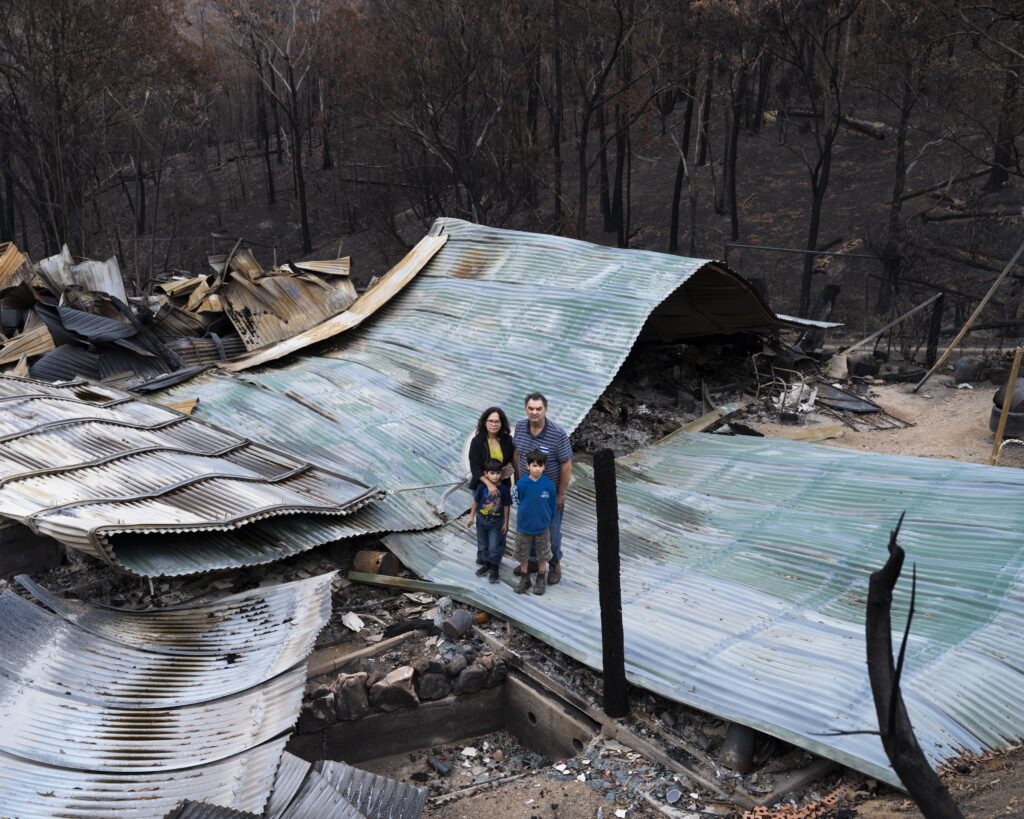
The hopelessness in his speech is put to the test, however, by the continuity of his projects, which according to the photographer are established in a pyramid sustained between documentary, art, and activism. “With Drowning World, it has always been a debate: when do we finish? Can I finish? In what point is complete? And that is a question I haven’t quite resolved for myself because there’s always more to do”. Mendel also plans to continue the Fire project, which covers another facet of climate disaster driven by human action. For his next venture with Fire, the photographer plans to raise funds to finance a return to California, where he photographed in 2018, and to Brazil, to document the consequences of the burning of the Pantanal.
With Drowning World, it has always been a debate when do we finish? Can I finish? And at what point? In what point is complete? And that is a question I haven’t quite resolved for myself because there’s always more to do.
Besides continuing these two works, he studies the possibility of making an unprecedented production based on his family history. His parents were German Jews who found refuge in South Africa. His paternal grandmother also tried to leave Germany but ended up failing. The photographer’s father kept the documents that had been prepared for his mother’s coming, however. To this, Mendel adds correspondences and albums made by his grandmother, who studied photography in Berlin from 1915 to 1917. “I’ve been sitting with this work for so many years, and I’ve always resisted it, but the time’s come to try. Maybe I had to wait for my mother to die, she died two years ago. The problem is this is not a unique story, many families have been hurt by migrations, the question is how do I make it, what do I bring to it”. It remains to follow his course to know.
Leia em português, clique aqui.
*Modifications were made to the article for clarity.



